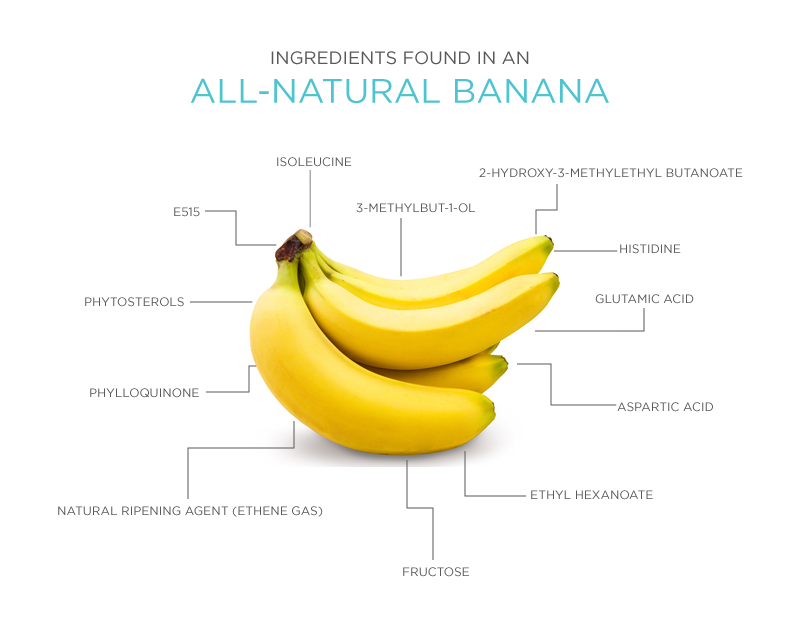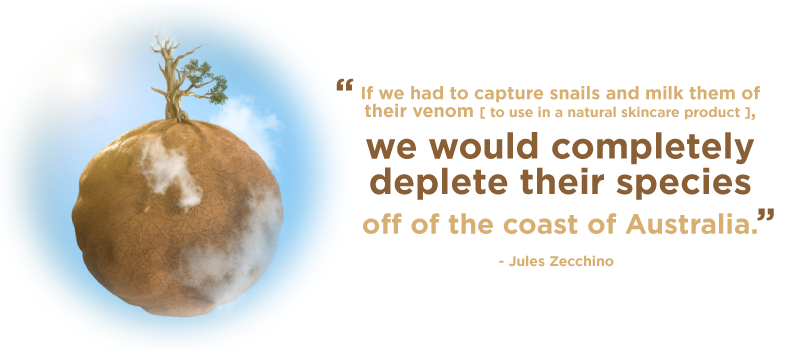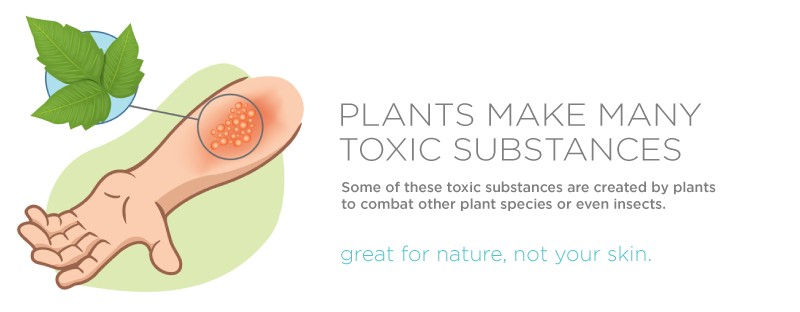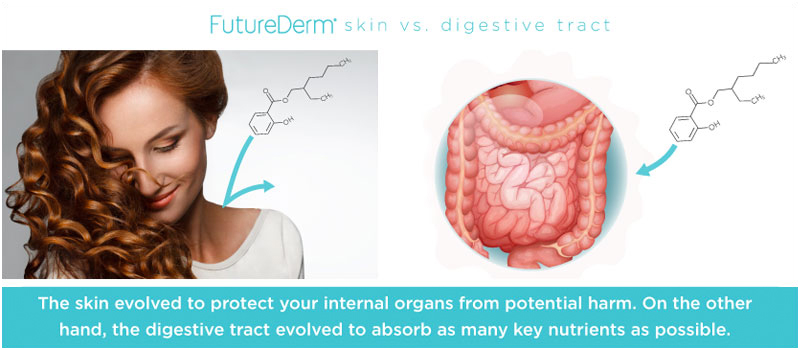I started FutureDerm so that I could offer skincare fans a means of understanding the science behind skincare. I’m also passionate about reviewing the “latest and greatest” product or trend.
One of the most popular pieces of advice as of late is, “You shouldn’t use a skincare ingredient if you can’t pronounce it”, or its variants:
“If my eighth-grader doesn’t know what it is, I won’t use it”
“Make thy food thy skincare.”
While I certainly do support the use of certain plant extracts, that doesn’t mean that every “natural” or “pure” ingredient is as innocuous as it claims to be. Yet the burning question still remains: should you be able to pronounce your skincare ingredients?
Truth #1: “Natural” Ingredients are Made of Chemicals and Compounds

Consider the banana, a favorite ingredient in the natural ingredient movement (and my favorite cereal topping)!
Did you know that a non-genetically modified, all-natural, organic banana contains ethylhexanoate, 2-methylpropan-1-ol, yellow-brown E160a, and an assortment of other ingredients you can’t pronounce?!
Truth be told, the ingredients list on a natural banana reads more like an artificially-flavored children’s snack. As scientist James Kennedy further points out in an infographic, the banana is actually compromised of dozens of ingredients, many of which are indeed hard-to-pronounce and some of which even I have never heard of before.
Is this any reason to avoid eating the banana? Heck no! Even the most superb chemist will likely not know the name or function of every ingredient found in a given fruit or vegetable.
Therefore, using your eighth grader’s ability to pronounce an ingredient’s name or expound upon its merits as safe or effective is NOT a valid means to judge. Simply because you don’t know a scientific word doesn’t mean that you are harming yourself with scientific-sounding compounds!
Truth #2: “Natural” and “Pure” are Only Marketing Terms and are LESS Regulated than Synthetic Ingredients
Regulatory agencies rely heavily on voluntary cooperation with skincare companies when regulating and designing their products. Given the multitude of skincare companies out there and practical limitations (i.e. they cannot review every single product debuted on the market), there is a lot of room for companies to accidentally mislabel their products as “natural”, “pure”, etc (LEDA at Harvard Law School).
In fact, “natural” or “pure” are nothing more than marketing terms and are not used uniformly (or even given a unanimous definition) amongst skincare companies. Whereas “organic” must face a certain degree of scrutiny, “natural” or “pure” do not.
Moreover, whereas regulatory agencies heavily regulates many synthetic or chemical substances in skincare formulations, most companies are virtually able to include natural ingredients in any form or concentration that they so choose. For instance, you may get drastically different results from “grape seed extract” from one brand versus another, based on the source, location, purification standards, and preservation methods each skin care company uses. On the other hand, you are more likely to get consistent results from “Matrixyl 3000” or “L-ascorbic acid” and other chemical-based skin care products, because these all come from similar sources and locations and are bound to the same purification and preservation standards.
Truth #3: Some Natural Products May Ironically Harm the Environment
Even if a company were to use “natural ingredients”, there is a good chance that these products may have harmed the environment.
For example, extracting natural coconut for use often depends on a chemical found in the bark of a Malaysian tree. Extracting this chemical involves removing the bark, which subsequently kills the tree. While some companies guarantee they will reharvest plants, many do not.
So although this “natural” coconut extract is exactly the same chemically as that synthesized in an organic chemist’s laboratory, it is also much more expensive and hazardous for the environment!
Truth #4: Natural Ingredients May be Impure and Cause Irritation or Allergic Reactions
Since “natural” ingredients do not need to undergo the same tests for purification or rigorously testing that synthetic ingredients do, there is a higher probability that the formulation will contain some sort of toxin or irritant.
These impurities may be derived from the plant’s inherent structure or may be absorbed from the plant’s environment before being harvested. Worse yet, many people fail to realize that natural fragrances and substances can cause the same kinds of allergic reactions and adverse effects as synthetic ingredients (Environmental Working Group, Everyday Health).
Many “natural” products also tend to pose a risk by excluding robust preservatives that can keep a product in usable condition for a longer period of time. Blueberries, for instance, naturally produce and contain parabens as an organic preservative. Why we keep excluding them from skin care when they have never been proven to be harmful, cancer-causing or estrogenic disrupters when ingested or topically applied at reasonable concentrations is beyond me — even vitamin C is toxic in the 100000 times typical dose concentrations parabens are often used in studies — but that’s another topic, for another day!
[Read More: Are Paraben Alternatives Actually Better?]
[Read More: 3 Reasons Why Paraben Alternatives May Be Worse Than Parabens ]
Truth #5: Food reacts differently when slapped on your skin than when ingested in your digestive tract!
Another popular piece of advice is that whatever is suitable to ingest is suitable as skincare. Among the numerous food and skincare-related claims out there, this one makes sense with certain food compounds – but not most.
Here’s why.
First of all, the skin on your outer body and the skin encasing your internal organs are two totally different tissues. One is made to protect; the other, to absorb. For example, it is believed that an alkaline/basic, or high-pH, diet is best for your health. This is because the hydrochloric acid in your stomach has a pH of approximately 2, thus neutralizing and breaking down high pH/alkaline food much better than acidic food. It doesn’t hurt that the vast majority of healthy fruits and vegetables are either alkaline (like leafy greens) or leave an alkaline ash in your system (like lemon and most citrus fruits).
[Read More: Tomatoes, Lemon, Olive Oil, and More: Are They Food, Skin Care Ingredients, or Both?]
The exact opposite is true with your skin: acidic or neutral products are best for your skin. This is because your skin has a natural acid barrier that is significantly disrupted by agents with a pH higher than 7.0 (Skin Pharmacology and Physiology). Your skin becomes more exfoliated with products that are highly acidic, with a pH of less than 5.5 (the reason why glycolic acid and lactic acid peels are a huge hit!). Your skin’s healthy physiology, containing microflora and healthy bacteria, is maintained at a neutral pH (Acta Dermato-venereologica). So you DON’T want to apply foods that are alkaline to your skin!
The skin on the outside and your internal organs function differently in regards to absorption as well. For example, substances larger than 500 Daltons cannot penetrate the skin, whereas the skin of the digestive system can breakdown and absorb most molecules that are smaller than 500 Daltons. This is why collagen applied to the skin acts as nothing more than a hydrator, whereas collagen that is ingested is broken down by the digestive system into amino acids that have been shown to help support collagen in preliminary studies.
Here are some examples of how pH, absorption, and enzymes can make a huge difference between how a food reacts with your digestive tract and with your skin:
Foods Which Are Great to Ingest But Poor to Apply
- Tomatoes – Tomatoes are a great source of vitamin C when ingested, but may encourage matrix metalloproteinase formation (Free Radical Biology and Medicine)
- Lemon – A great source of vitamin C when ingested, but known to cause sun sensitivity and blistering when applied topically (American Journal of Clinical Nutrition,Photoimmunology, Pho
todermatology, andPhotomedicine). - Milk – May induce breakouts when applied either topically or ingested (Journal of the American Academy of Dermatology, DermatoEndocrinol
ogy) - Algae extract – Full of nutrients when ingested, but known to induce irritation or atopic dermatitis if not properly purified. Claims of anti-tumor or anti-carcinogenic activity are typically due to one benefit part of the plant, not the entire plant (British Journal of Dermatology, Experimental Dermatology)
- Turmeric – Turns skin orange unless tetrahydrocurcuminis extracted (Journal of Ethnopharmacology, Molecula
r Nutrition) - Earl of bergamot tea — Believed to have anti-carcinogenic effects when ingested, but can cause irritation and increase sun sensitivity when applied to the skin(Archives of Dermatology, Journal of Agricultural and Food Chemistry, Journal of the American Academy of Dermatology)
Ingredients that are good for eating and skin
- Vitamins A – Vitamin A compounds are retinoids, that are wrinkle-fighting, skin-firming, and exfoliating).
- Vitamins B3 & B5 – Vitamin B3 is niacinamide, which is hydrating and helps with skin sallowing (read more), whereas vitamin B5 is the hydrating and wound-healing pantothenic acid (European Surgical Research)
- Vitamin C -Vitamin C is available in multiple forms, including L-ascorbic acid, tetrahexyldecyl
ascorbate,ascorbyl palmitate, and sodium ascorbyl phosphate. While more acidic forms are more exfoliating and newer forms are more stable, the same truth remains for all: they have been shown to increase skin firmness, fight sunspots, and grant skin a “glow.” - Vitamin D – Vitamin D has more limited benefits in the skin, but has been associated with antimicrobial activity (Science).
- Vitamin E – Vitamin E strengthens the action of vitamin C and is quite hydrating (Linus Pauling Institute)
- Vitamin K – Vitamin K has been shown to fight dark circles around the eyes when paired with a retinoid and vitamin C (Journal of Cosmetic Dermatology)
- Most monounsaturated cooking oils like coconut oil, olive oil, and avocado oil – Coconut oil has been shown to have hydrating potential more significant than mineral oil (Dermatitis). Even though a lot of the other claims I hear in natural and organic product circles regarding the skin-friendly benefits of coconut oil when topically applied to the skin are largely unfounded, it is still unlikely to do any harm when applied topically with the right ingredients. Olive oil has substantial anti-carcinogenic, antioxidant, and hydrating effects (read more). Similarly, avocado oil can be skin-softening, antioxidant, and have potent hydratingeffects.
- Green tea, white tea, red tea (virtually all teas except Earl Grey) – Green, white, and red teas are shown to fight skin cancer when ingested (yes, you read that right) and to have anti-wrinkle, antioxidant, and soothing properties when applied topically (read more about green tea).
- Cucumbers – Cucumbers have been used in ethnic medicine when ingested as a diuretic, treatment for hypertension, and to reduce swelling and inflammation (Mosby’s Handbook of Herbs and Natural Supplements). Their water content, low calories, and decent level of fiber are greatly touted, but they contain relatively few vitamins and nutrients compared with other veggies on their own (Cambridge World History of Food). By concentrating them, products can make the most of their vitamin C content, which works as an antioxidant, increases collagen, and reduce wrinkle formation. In one study, a concentrate was shown to be good for skin brightening and anti-acne purposes (African Journal of Biotechnology).
- Oatmeal – Oatmeal extract has been shown in studies to relieve pain and itching by inhibiting prostaglandin synthesis. Also, studies published in the Journal of Drugs in Dermatology suggest using colloidal oatmeal as a first-line treatment to alleviate the symptoms of psoriasis, eczema, and atopic dermatitis. It is suggested that use of colloidal oatmeal to treat these conditions may allow for reduced need of topical drugs like corticosteroids orcalcineurin inhibitors, which have more known potential side effects than colloidal oatmeal.
- Grape seed extract/resveratrol – Grape seed extract is excellent antioxidant because it contains procyanidins, which inhibit lipid peroxidation, the process in which pesky free radicals steal neighboring electrons from lipids in cell membranes to cause cell damage, a sign of microscopic aging (Phytotherapy Research). Topical application of grape seed oil has also been found to provide protection against UVB radiation, promote wound healing, reduce vascular engorgement, and even inhibit Streptococcus bacteria.
Foods that are Bad to Ingest, but Great to Apply Topically
- Sugar (when used as a scrub on the skin) – Sugar is like death to your insides when you overeat it; excess sugars tend to induce glycation, which can cause hardening of the arteries, clogging of the kidneys, and, yes, aging of the skin. But when you apply it to your skin as a scrub, sugar is genius. It has a round, small shape that exfoliates the skin well. Mix it with a little olive oil and rinse thoroughly for smooth, smooth skin.
- Caffeine – Caffeine is a drug. An approved-by-the-FDA-in-
reasonable-amounts drug, but a drug nonetheless, and one that can cause chest pain, arrhythmias, trouble breathing, hallucinations, and convulsions (amongst other symptoms) when overdosed (Healthline, 2014). On the other hand, topical application of caffeine or caffeine sodium benzoate have been shown by Lu et. al earlier this year to have a sunscreen effect, enhance UVB-induced apoptosis, and inhibit UVB-induced skin carcinogenesis when applied to the skin of mice. The exact mechanism by which caffeine achieves these aims is not yet known, but it may be related to the fact that the caffeic acid found in caffeine has been found to have some antioxidant activity. Topical application of caffeine additionally dehydrates skin cells, making the skin temporarily appear smoother. a diuretic (making the skin temporarily appear smoother).Lastly, caffeine is a vasoconstrictor, and its topical application may reduce the appearance of under-eye puffiness and dark circles, although only those caused by vasodilation. Dark circles may also be caused by excess production of melanin, in which cause caffeine would not most likely help.
Bottom Line
Long story short, there is no reason why you should avoid using skincare ingredients which you cannot pronounce or which you cannot eat.
The truth of the matter is, there are hundreds if not thousands of hard-to-pronounce ingredients in a given fruit or vegetable (such as a banana).
Natural skin care ingredients tend to be less concentrated, less regulated, and less efficacious overall. This does not mean that all natural skin care is not safe or efficacious, but it means that natural skin care marketing is a concern. A lot of the “safety” issues promoted in anti-synthetic product ads from natural skin care companies are largely unfounded, and in fact the reverse is often true.
While I support the use of certain natural skin care ingredients like grape seed extract, jojoba oil, green tea, white tea, charcoal and others, I also caution that other natural compounds like tomatoes (UVB-sensitizing), citrus extracts (UV-sensitizing), Earl of Bergamot tea (irritating), milk (acne-stimulating growth factors) and many are NOT beneficial for the skin.
The only way to know the difference is unfortunately not with convenient marketing lines like “If I can’t eat it, I won’t put it on my face!” Instead, talk to a cosmetic chemist, dermatologist, aesthetician or beauty expert who specializes in ALL types of skin care, not just natural or synthetic. If you have any questions, I’m also always here!






